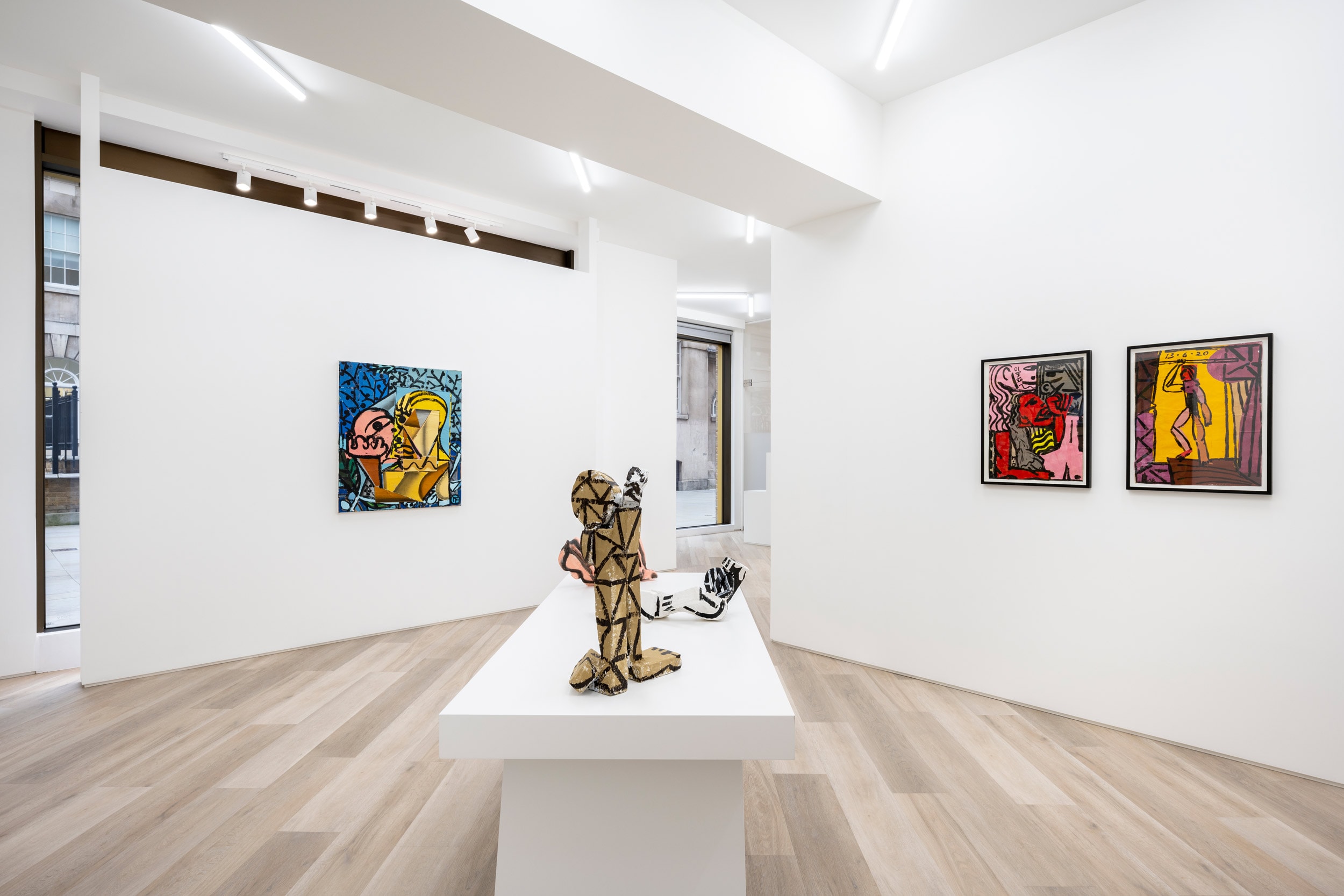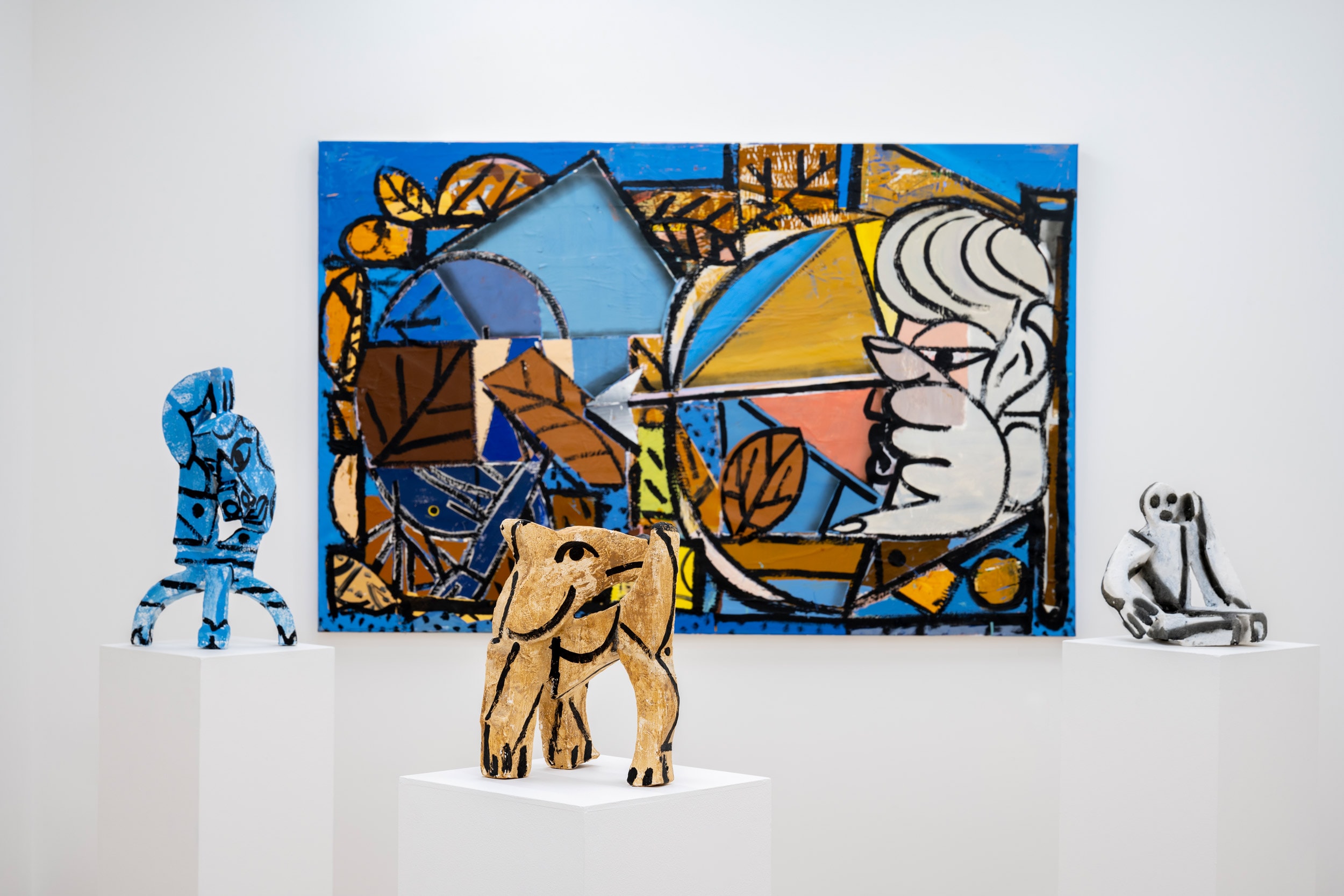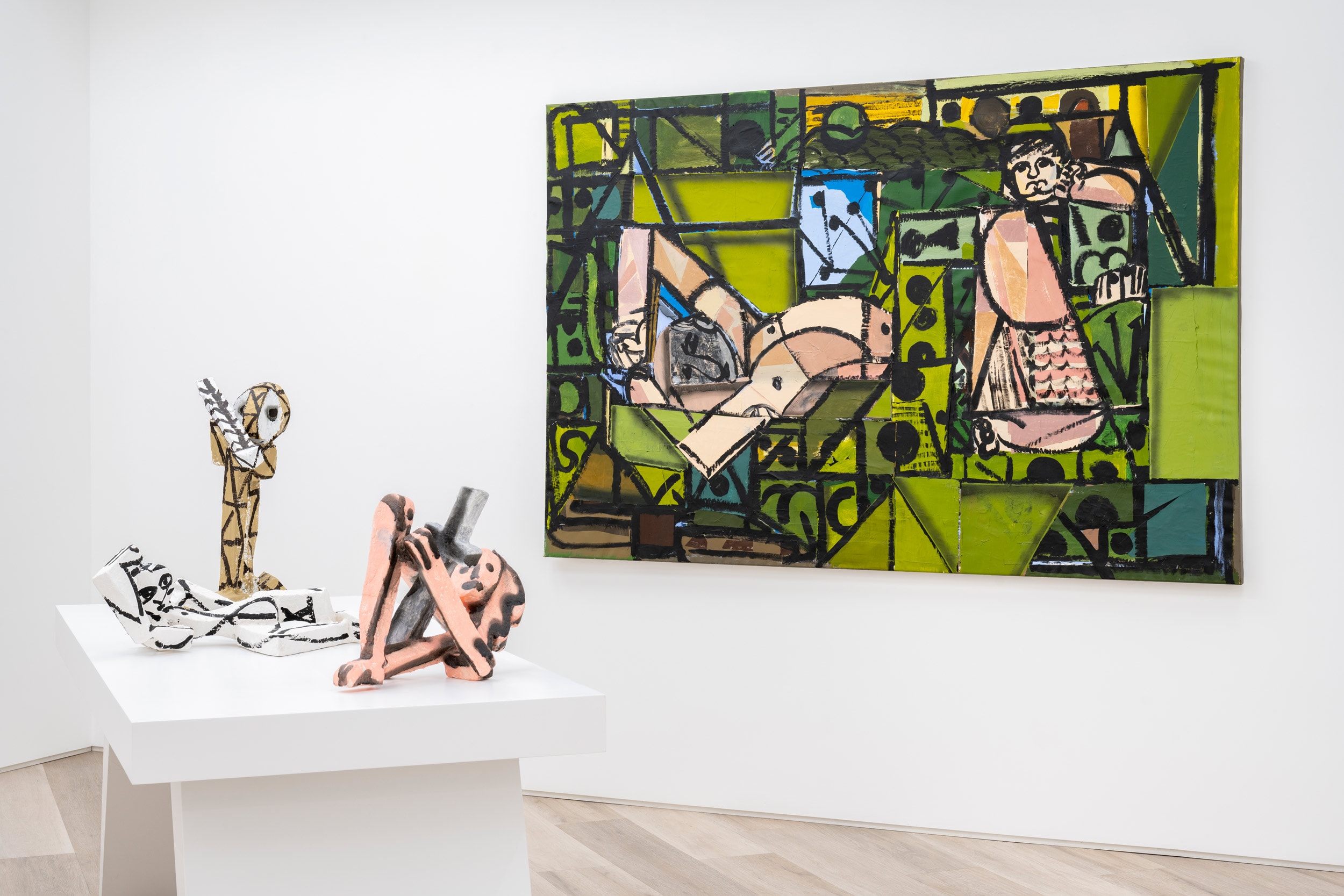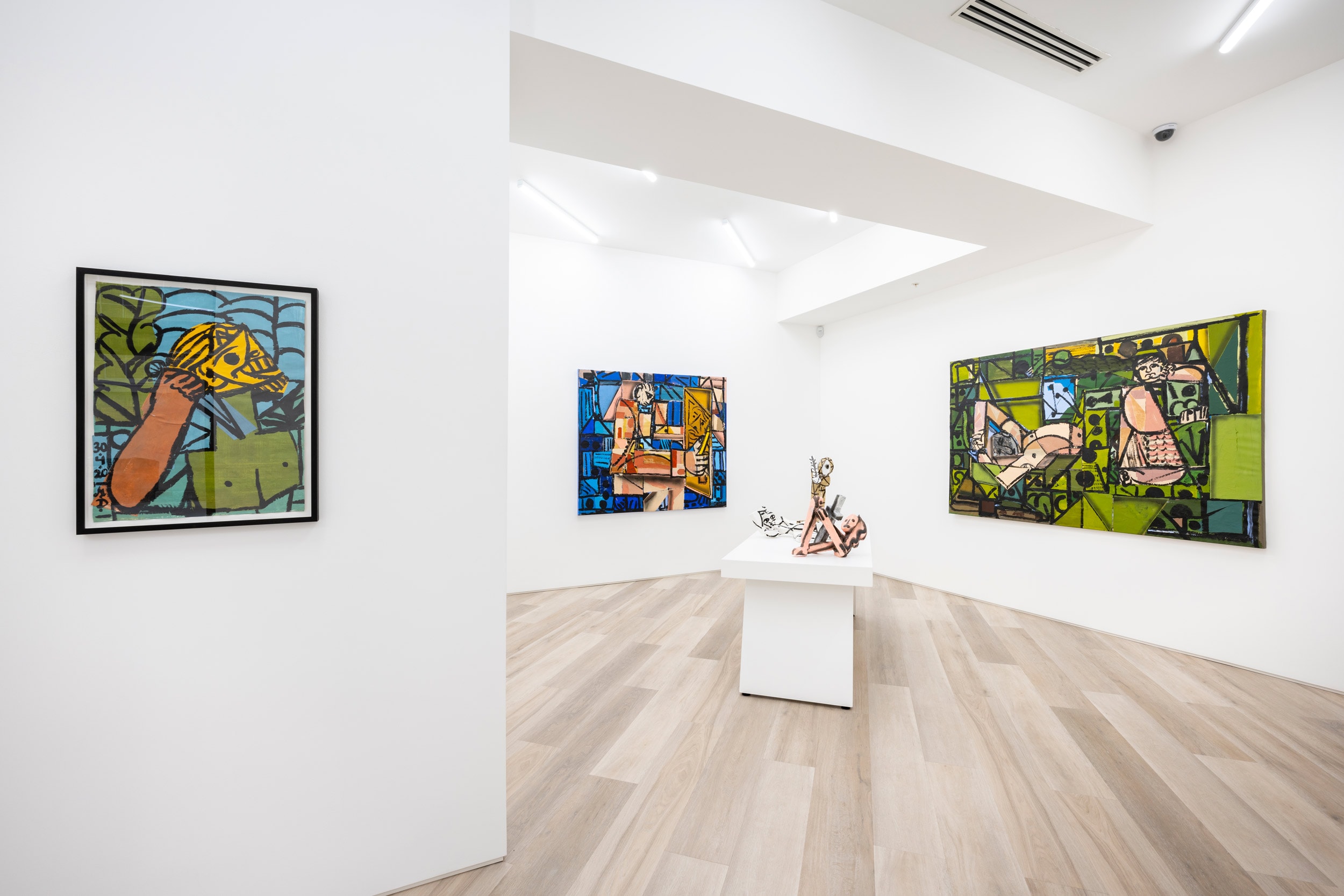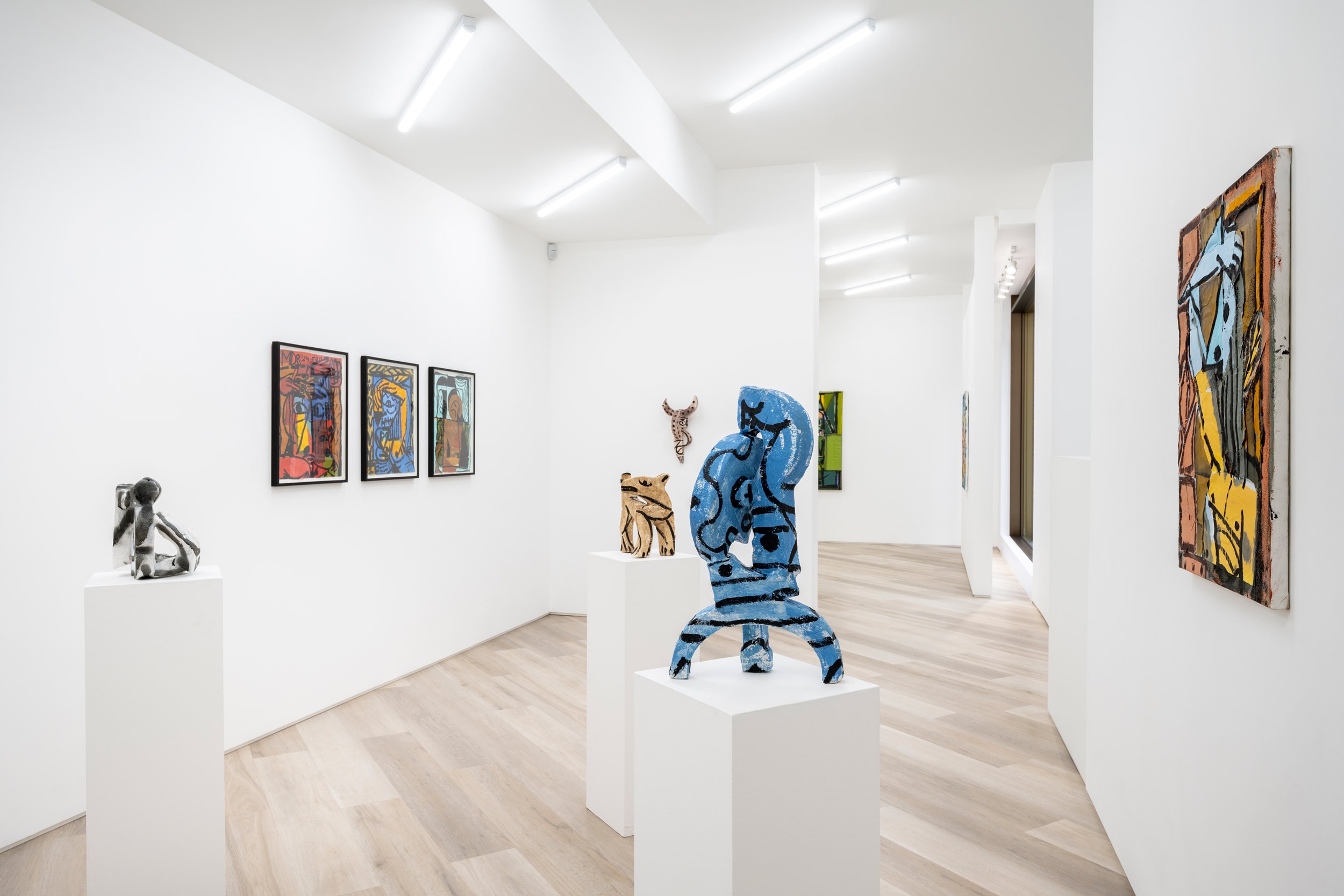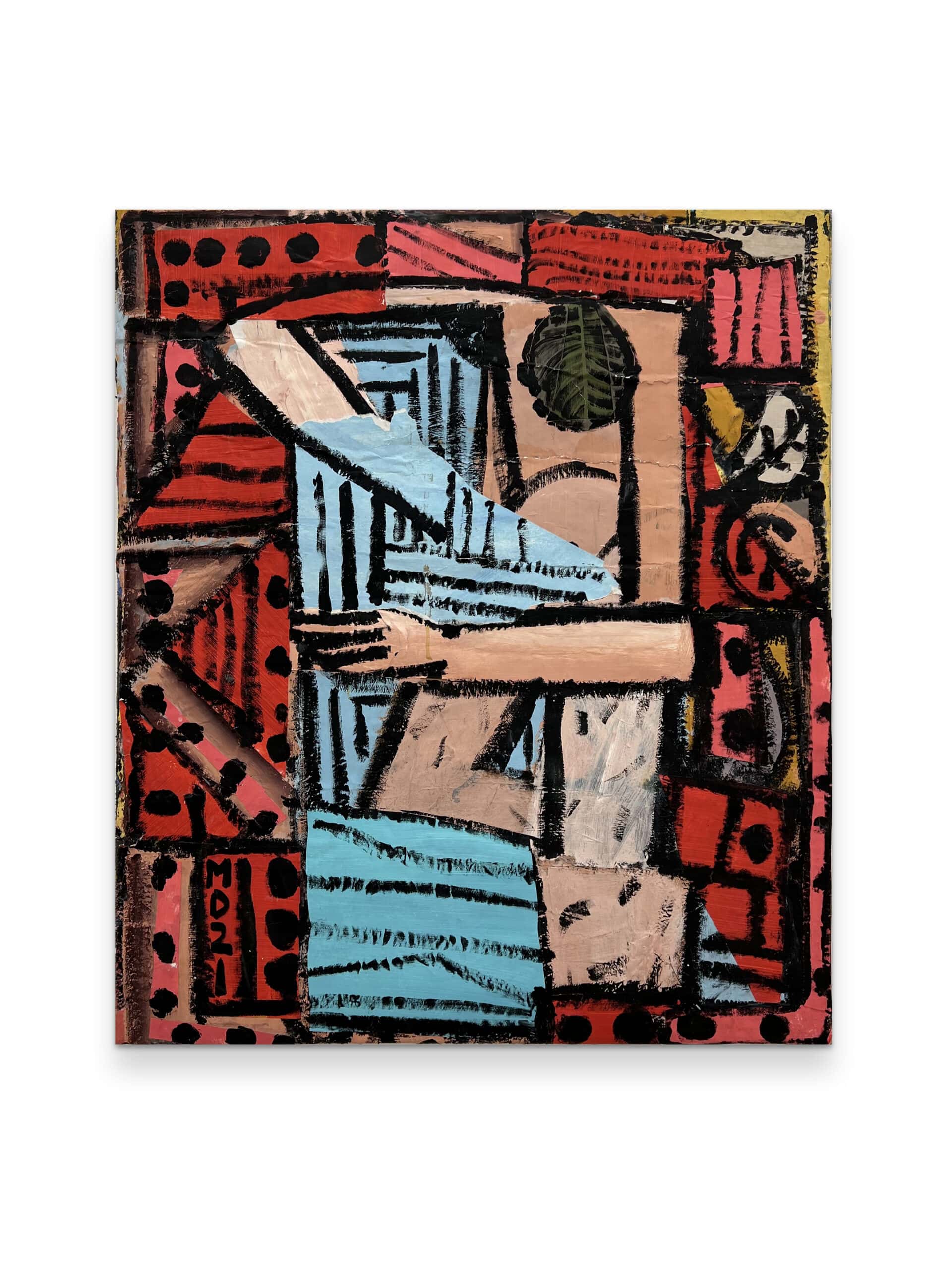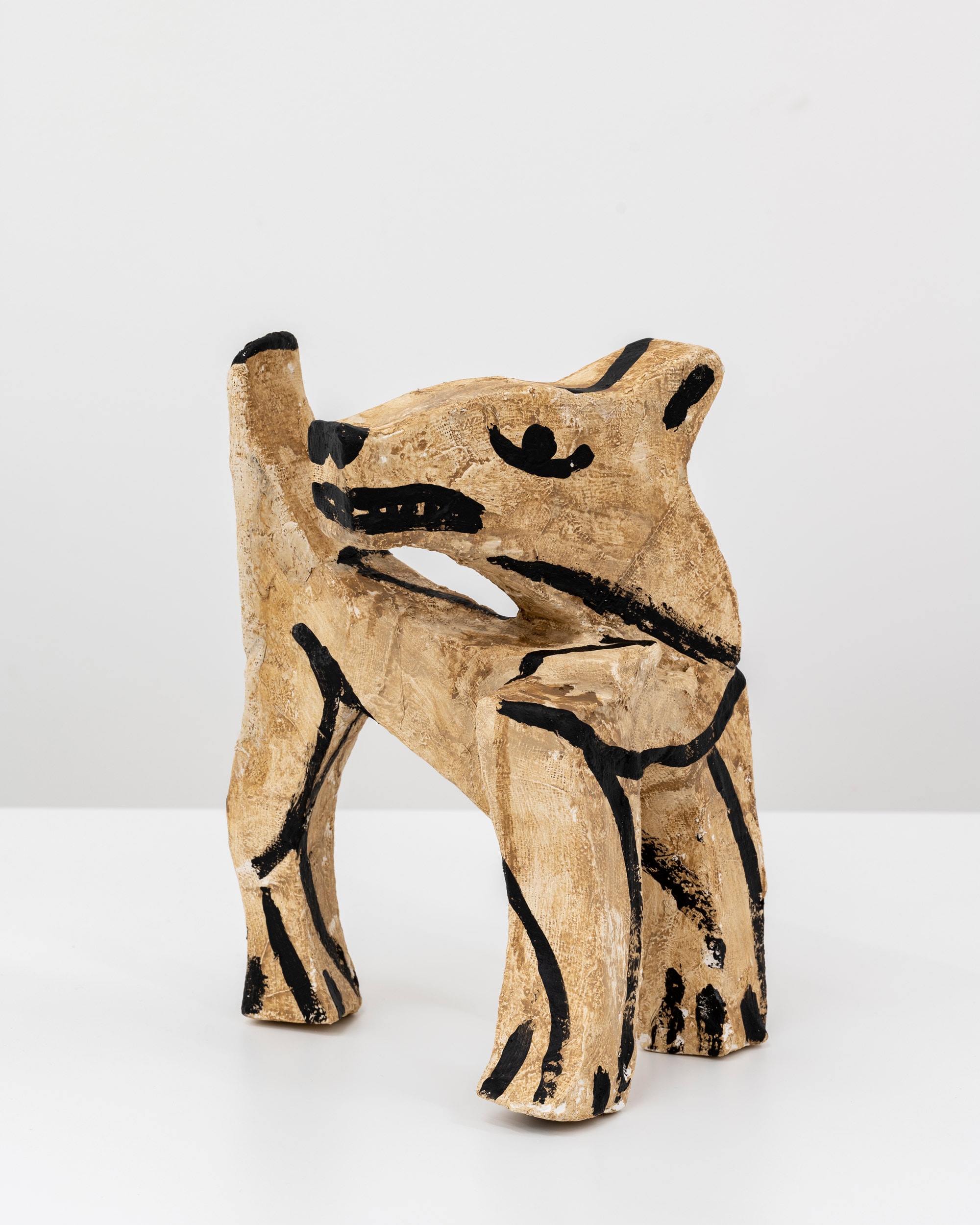Preview: Saturday 5 March, 2022 (1-4pm)
Exhibition: 6 March – 2 April 2022
Press Release
Artist Video
PDF catalogue of works
When we view the works of Martin Daiber, we see a sort of organized chaos: structures that aspire to break from their confines, and others that seem clipped, as if the Chilean artist has attempted to create thoughtful systems of representation.
In his first gallery solo, entitled Human Gardens, Daiber presents paintings, works on paper, and sculptures that seem to question the very nature and desire of our existence. At this point, it seems almost trite to state that any creative works have arisen as a result of mid- or post-pandemic society, but the reality is that this context is inescapable and inevitable. In 2021 the artist and his family moved to Aschersleben, Germany, for a residency. For three months his life (and that of his wife and child) were limited to his work in the residency studio. This idea of confinement, estrangement, and even confusion seems to enfold and form the very existence of these works.
The allusions to Analytical Cubism are apt. The Cubists, namely Picasso and Bracques, were inspired by an attempt to record multiple iterations of time and space within one pictorial image. In Daibers’s work, it’s not much of a stretch to imagine the artist working through various states of mind. Working through ‘making sense’ of a new environment and the problems and excitements posed therein. Questioning a world that has created restrictions and confinements, actually, seems perfectly suited to Daiber’s stylistic tendencies.
He began to think of such compartmentalization as similar to those by a gardener tending to a garden, where the flora is arranged by colour or varietal and arranged in a neat and aesthetic system. However, as any gardener knows, an unkempt garden begins to grow, bursting from its tidy, colour-coded structure: a weed here; an unexpected flourish there; even – given a few years of maturation, perhaps, a new hybrid poking its heliotropic face toward the sun.
“These are not the gardens modeled by nature, they are those made by humans, and that distinction seems to be very appropriate to metaphorically refer to artistic creation, understanding art as a clearly human condition that we have the illusion of being able to control, just as in nature, it is subject to greater forces.”
Daiber says he relates to ideas of the process: intuition, mark-making, accidents, a record of one’s thoughts in a time and place. A painting is a recording of all those things. There is a worked, laboured, and loved process to these works. One in which we, as viewers, can almost see his moments of joy or frustration. Those sudden paroxysms of inspiration that lead the artist to cover or reveal, and so the works are both totally aesthetic (read: ‘pretty’) but can also be viewed analytically, where decisions have been made and changed or worked (and then worked-over!) Where Daiber, as curator of the image, as decision-maker, and as ‘Gardener’ has tended to his creations, managing their desires to burst from their confines. Where he has allowed them to flourish, or where he has clipped.
Of both the paintings and sculptures, he states that they are the most figurative and/or anthropomorphic works he has created yet in his career: “surely the consequence of something that I have not yet fully deciphered but it seems to me that it must be related to the pandemic (the lack of social relationships) with focusing on loved ones.” So maybe there is an overriding sensation of hope (or, alternately, nihilism, depending on how you view things) given the state of the world. This aspiration for light recalls the lyrics from the song “La Jardinera” by Violeta Parra, (whom Daiber states inspired his title,) in which the singer of the song refuses to let her broken heart dispirit her:
when my sorrows are growing,
the flowers from my garden
will be my nurses.
And if I’m not here
by the time you repent,
You will inherit these flowers,
come and cure yourself with them.

